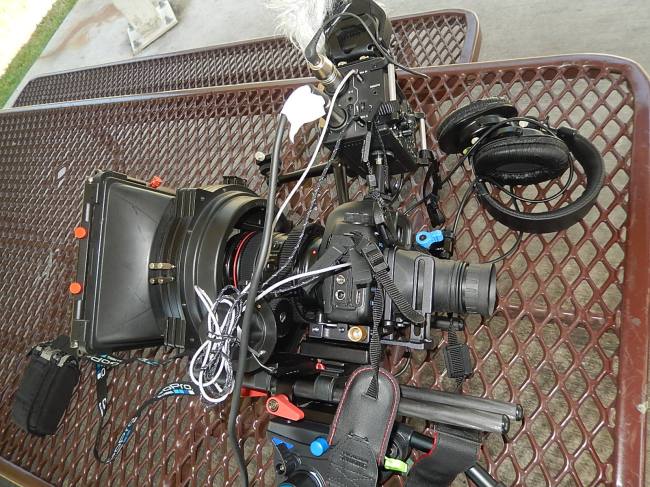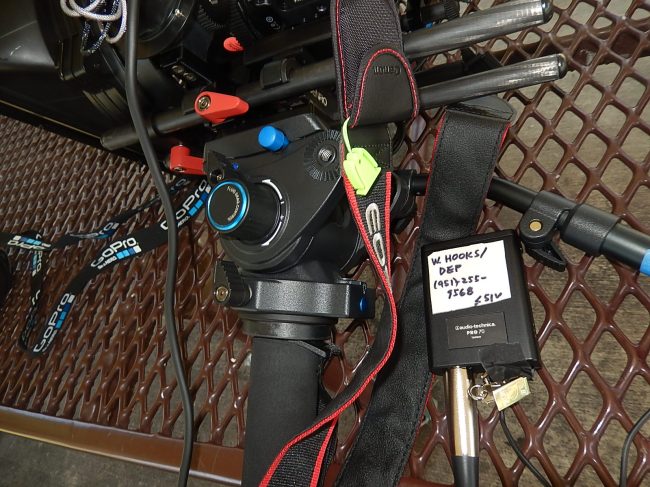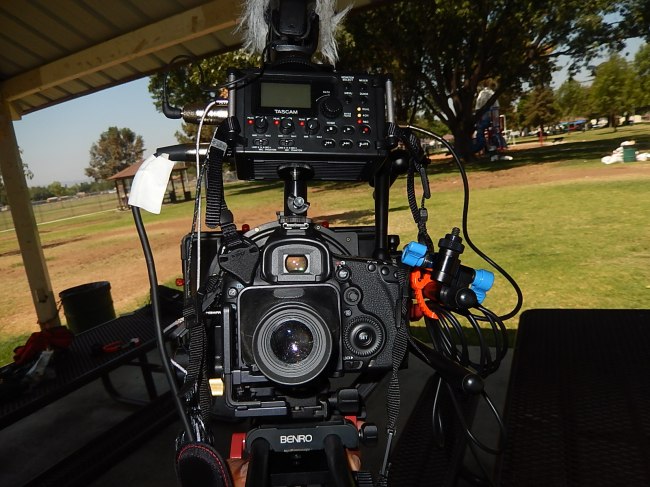This setup allows use of 4×4″ Tiffen ND filters, I have a 3-stop and a 4-stop which fit into the matte box for preserving wide lens apertures. That way, shallow DOF is covered for EFP and occasional ENG applications.Of course, all the other benefits of the matte box apply such as making lens changes fast and easy, and virtually eliminating flare.
The configuration is compact, secure, and very adjustable along the medium-length carbon fiber rails. Critical focus in bright light is achieved with the Hoodman Custom Finder.
As an option, I can add the Manfrotto DSLR remote controller for rack focus and faster ergonomics in starting and ending clips.
The Benro components are much better suited to this kind of arrangement on a monopod than my RedRock Micro components, especially the baseplate assembly. The RRM lacks screw threads for connection to the QR fo the monopod.
Functionally, it’s a little imbalanced from frontloading and the tilt is not as smooth as the pan, but overall I feel that the versatility of the rig more than compensates for these considerations.
It also travels relatively well, because the matte box can be broken down further for packing.
This is not going to yield the degree of camera movement possible with a shoulder rig, but I find it much better for longer ENG recordings since the monopod, and not my arms, support the system. It’s also easy to combine both, if a multicam shoot is desired.












